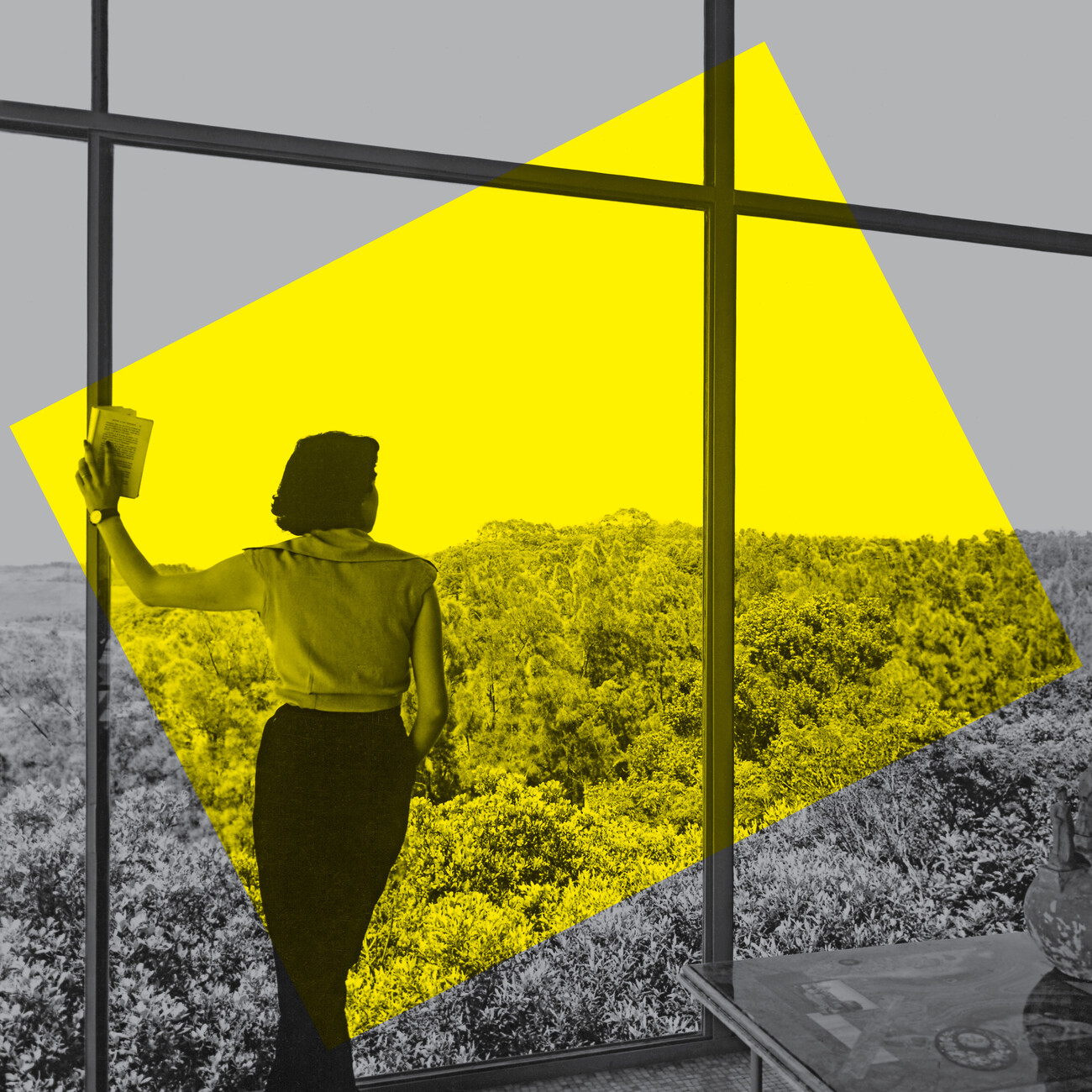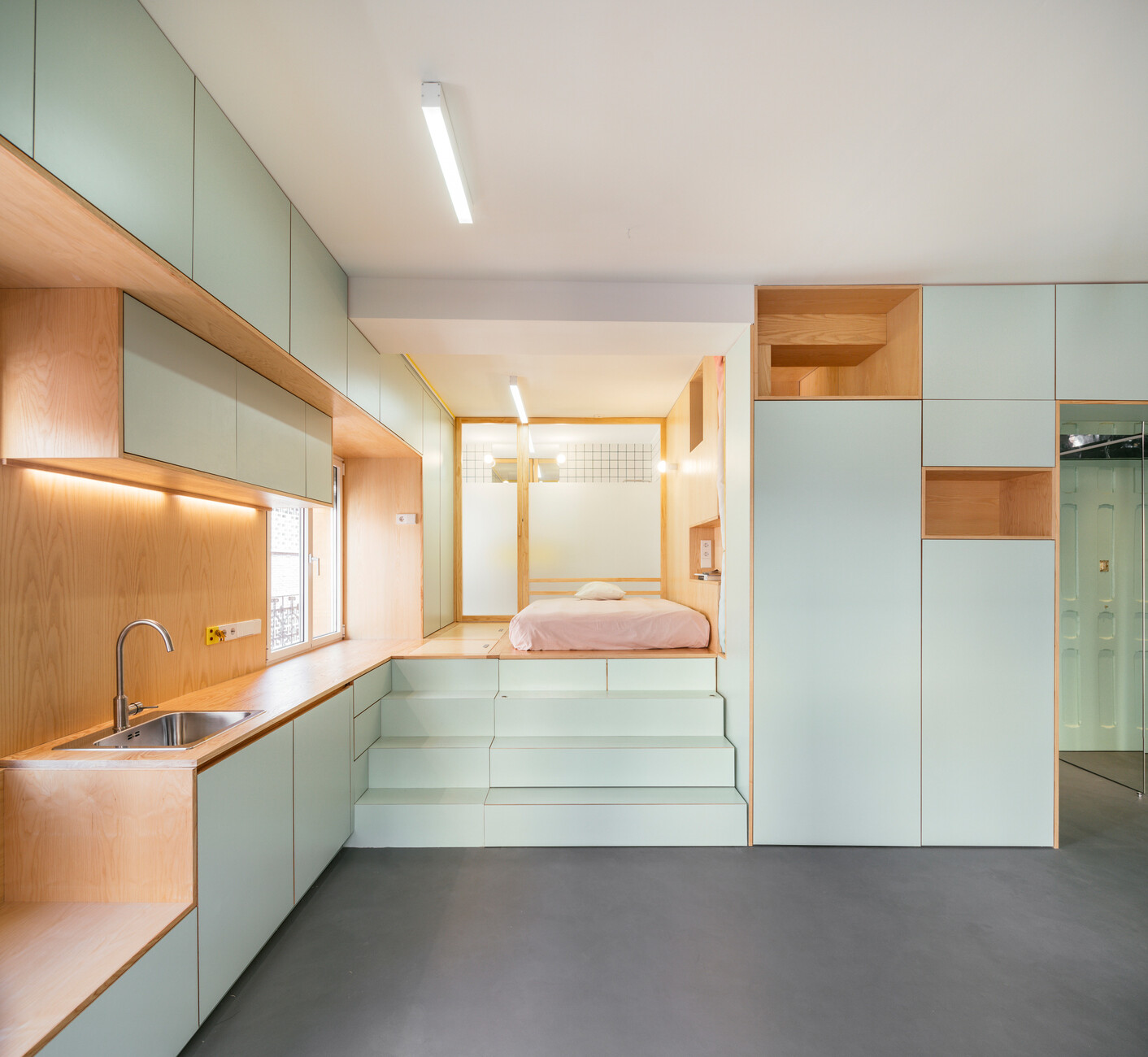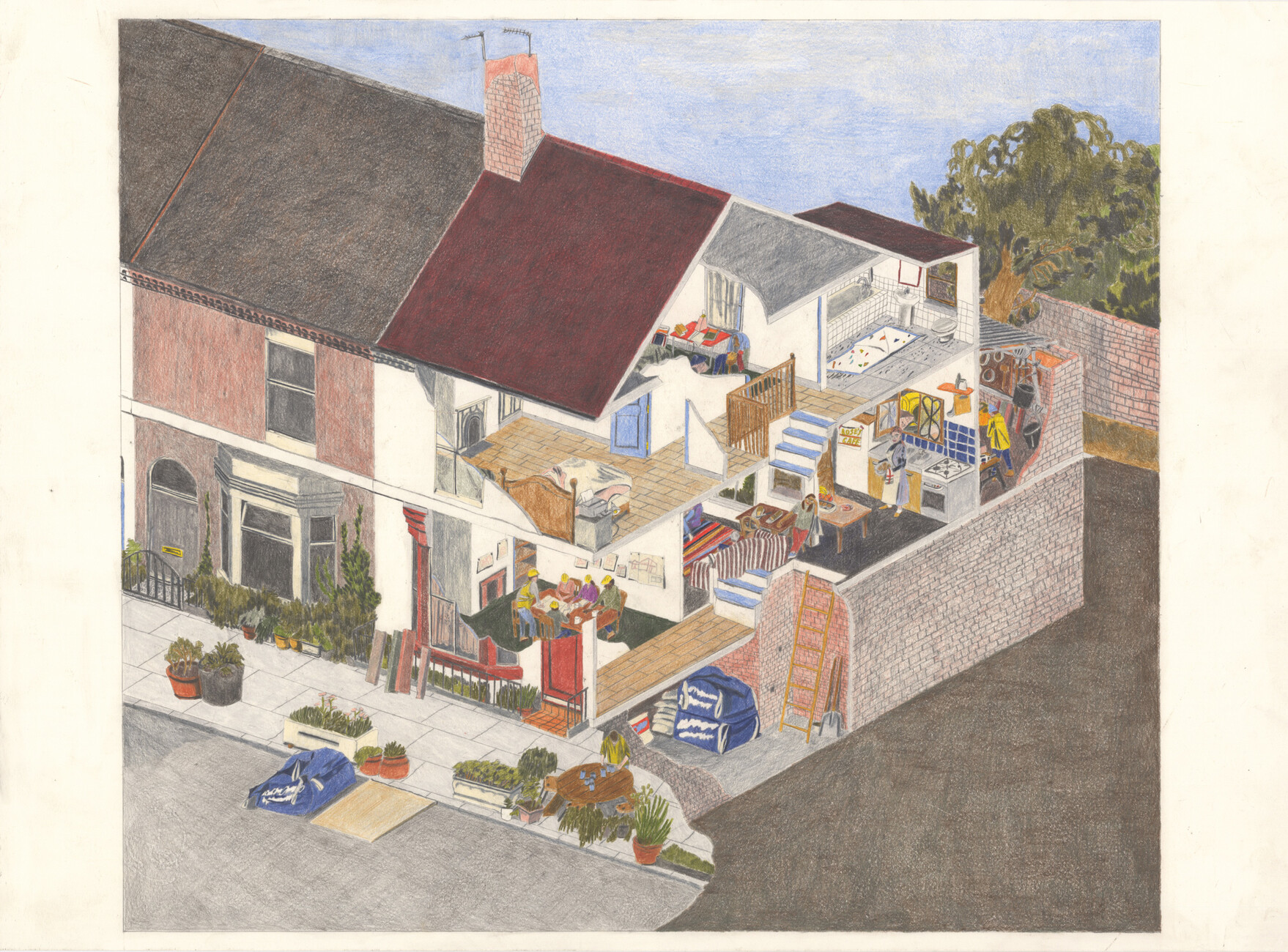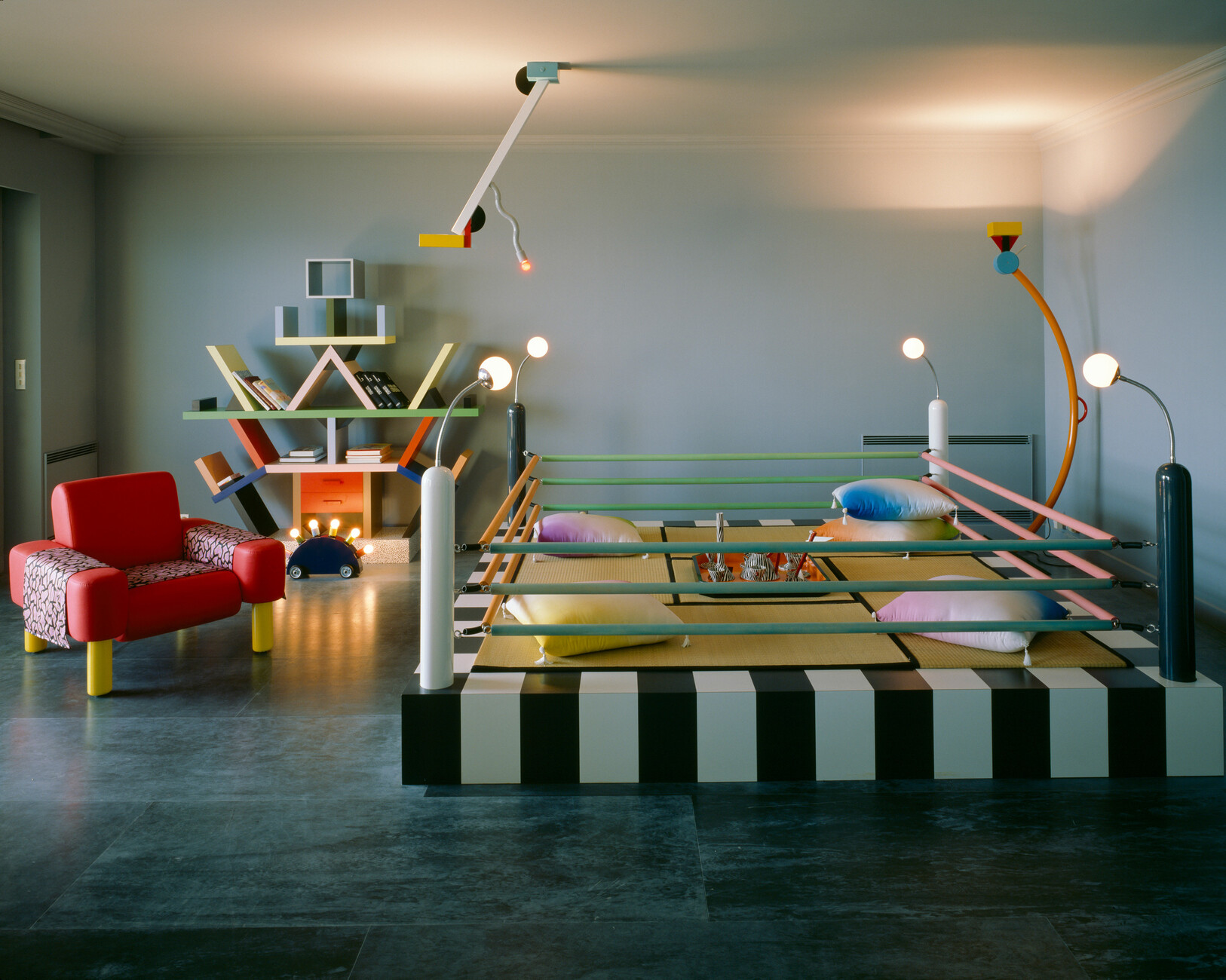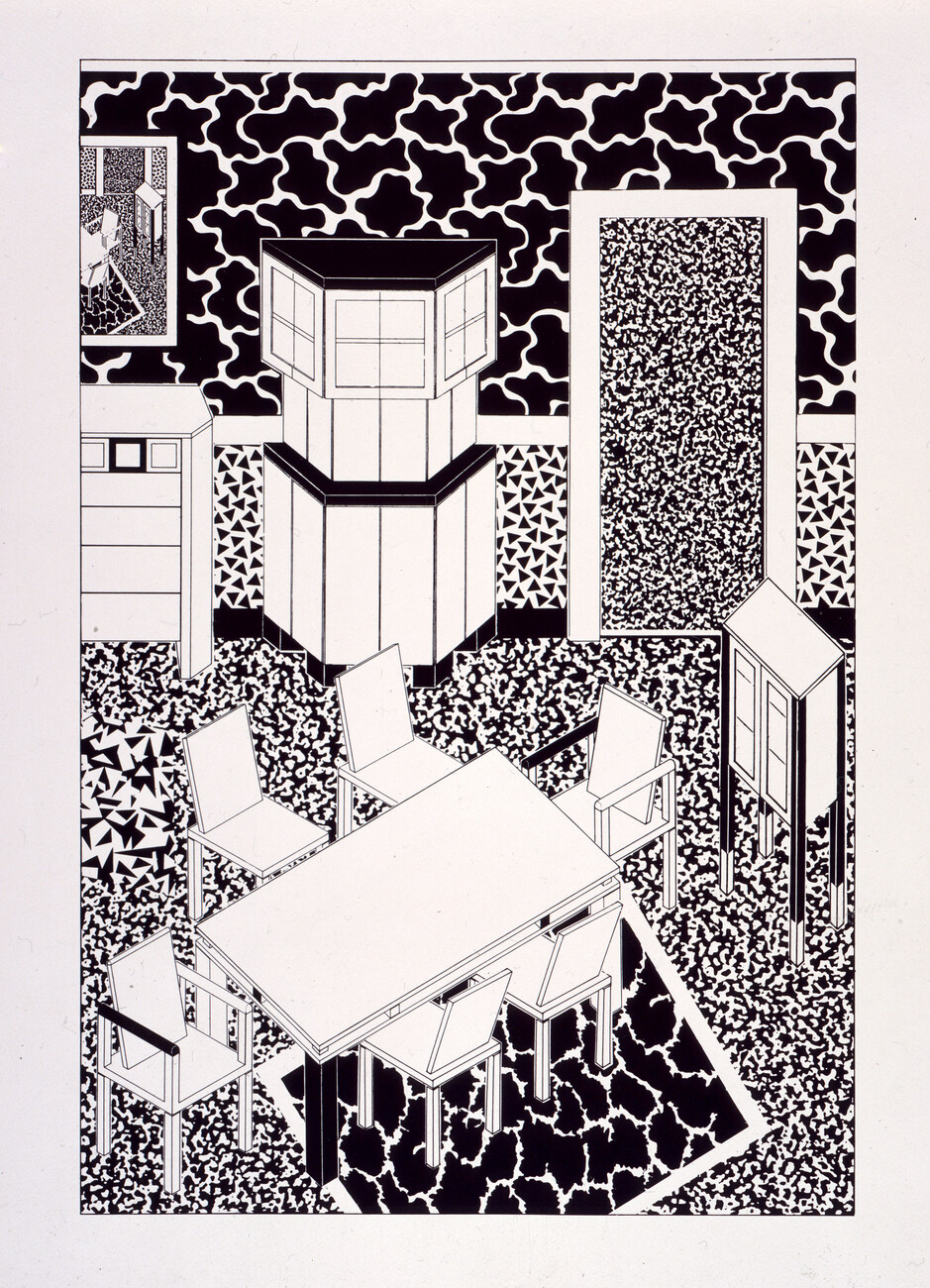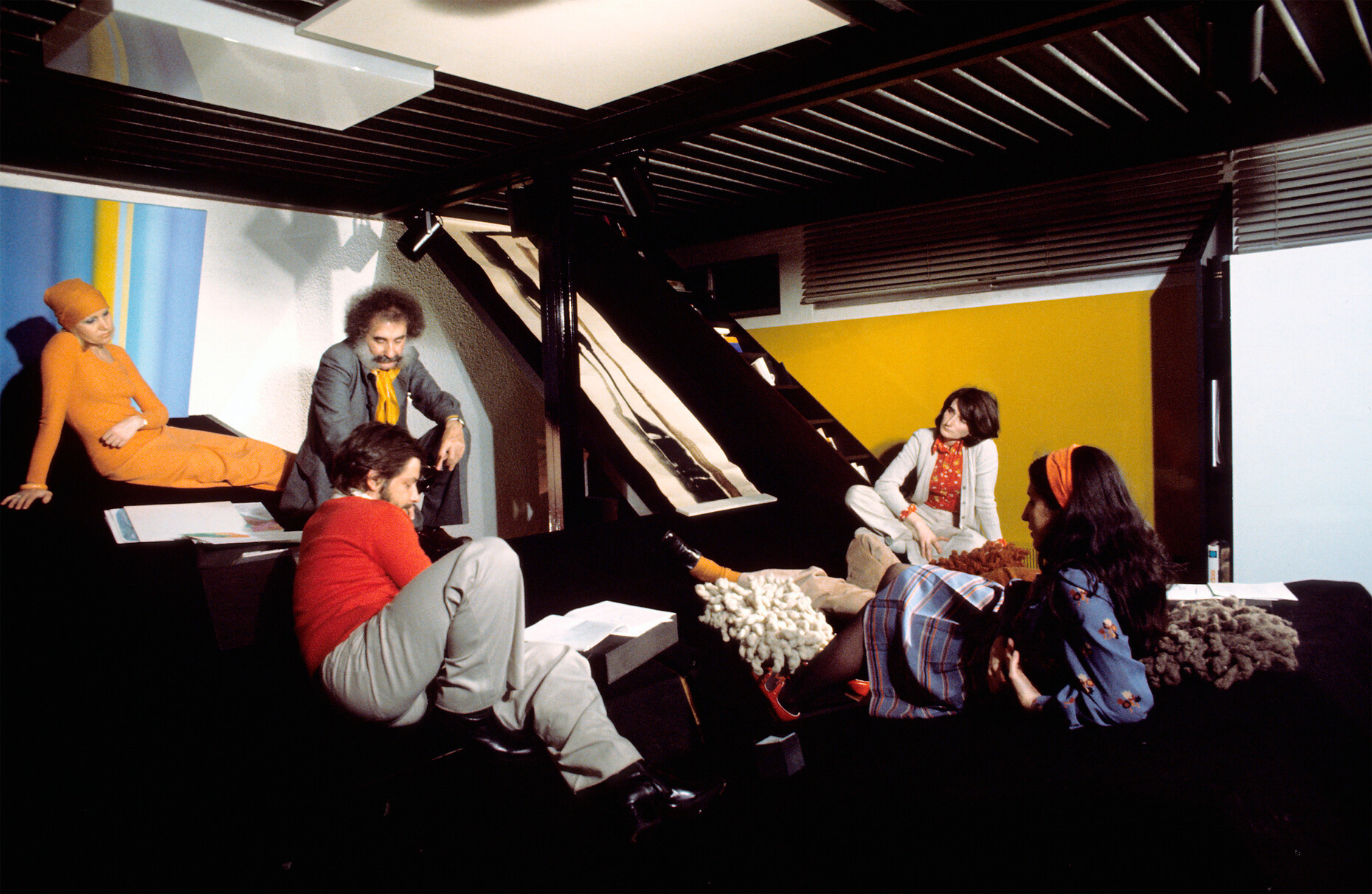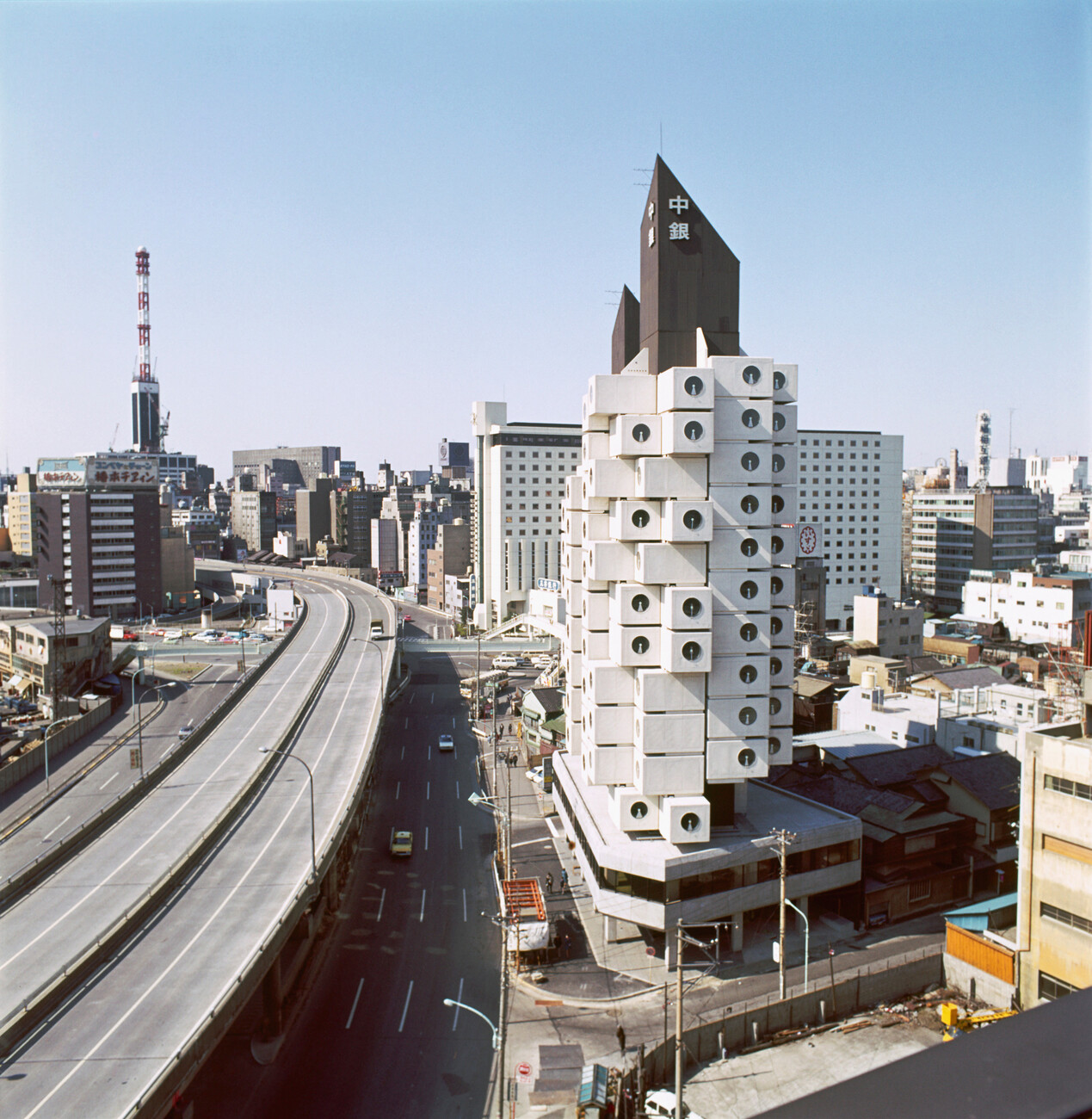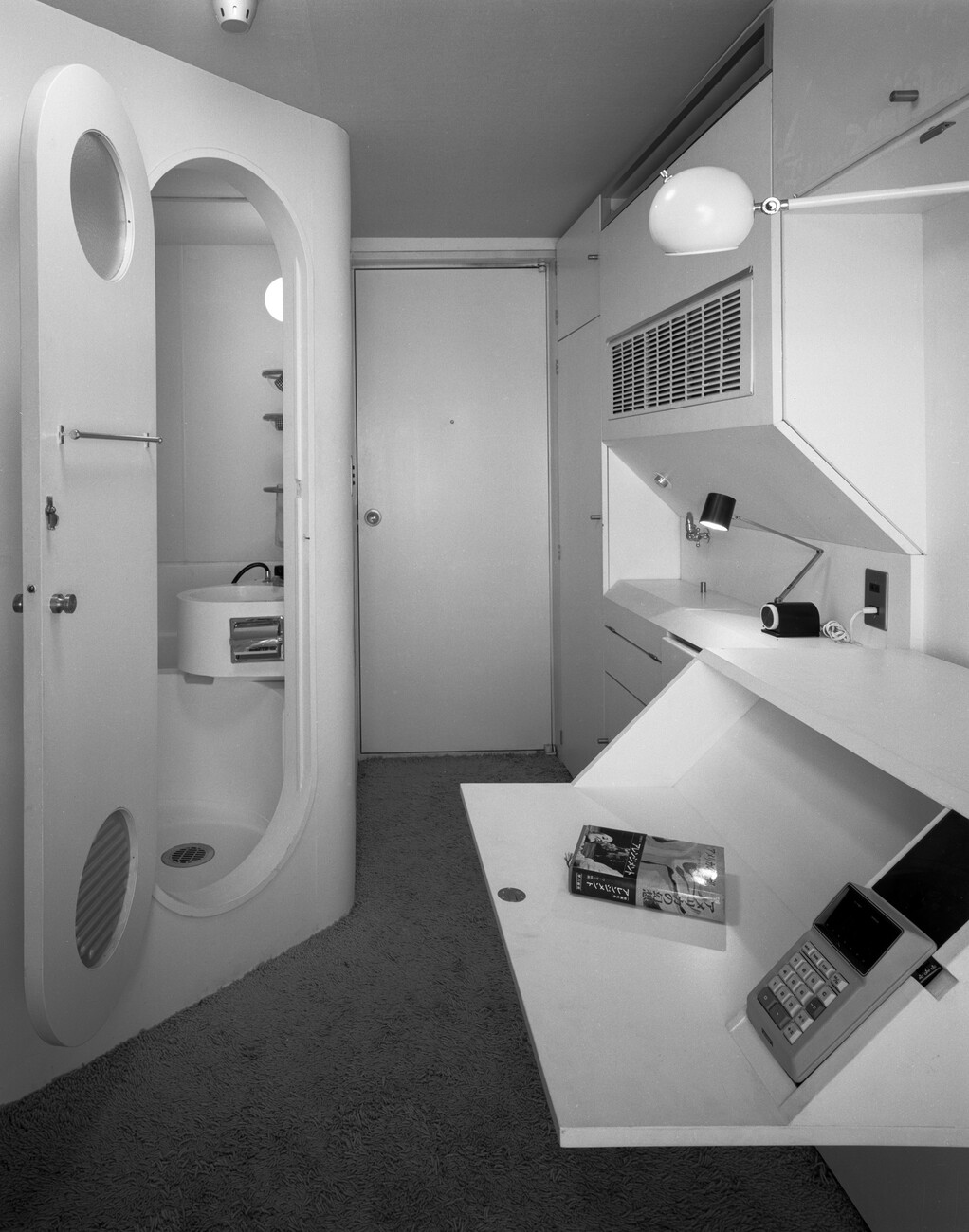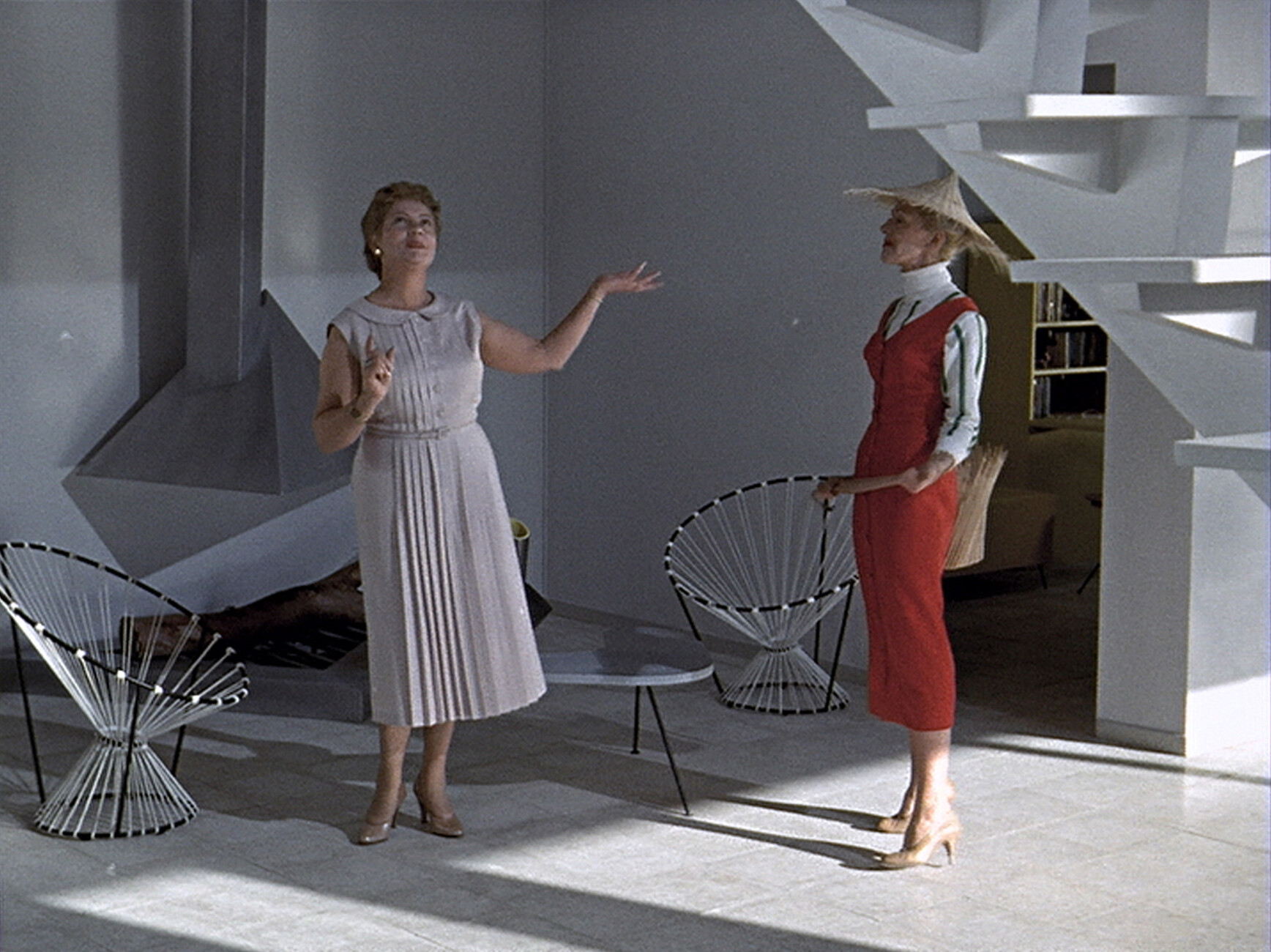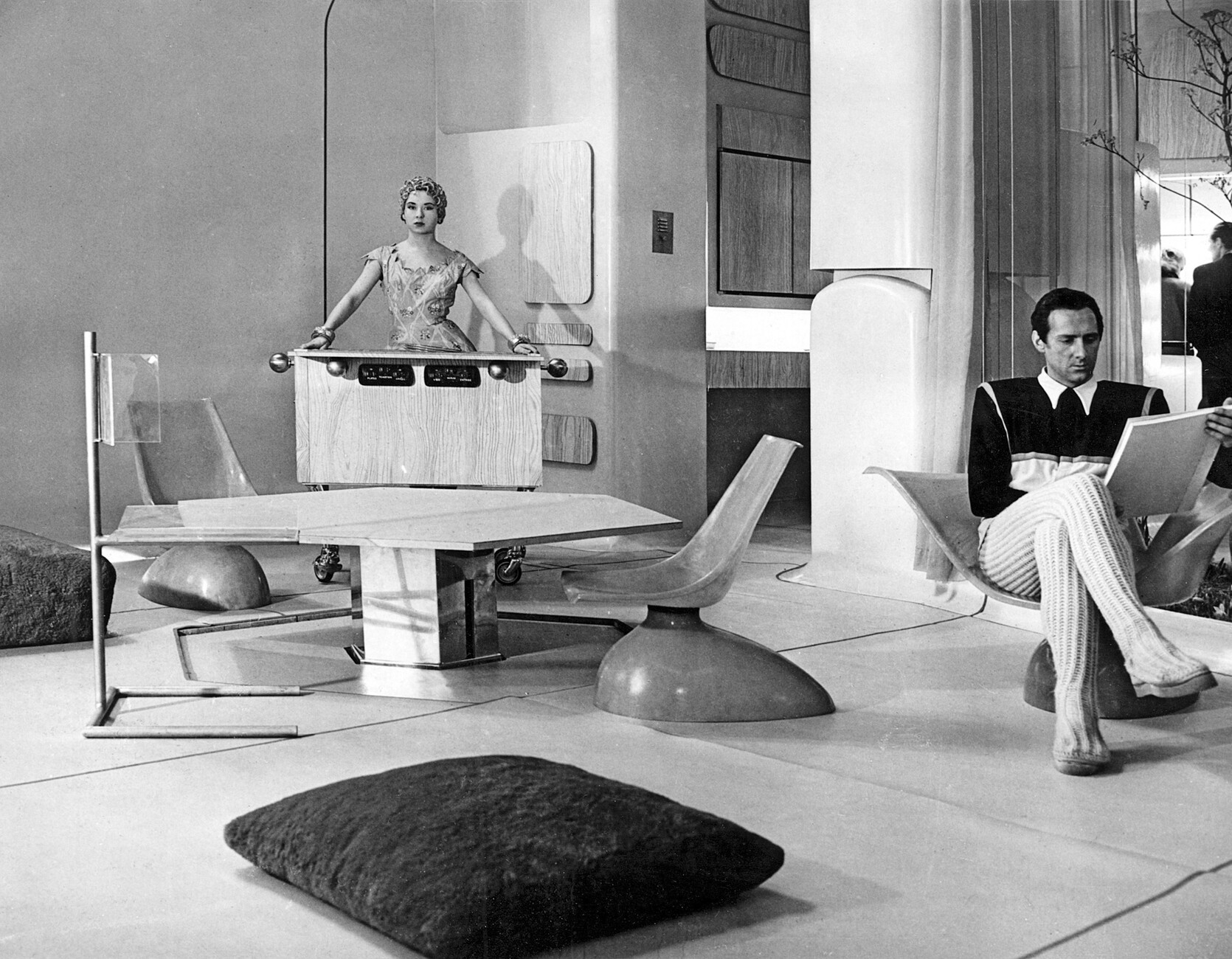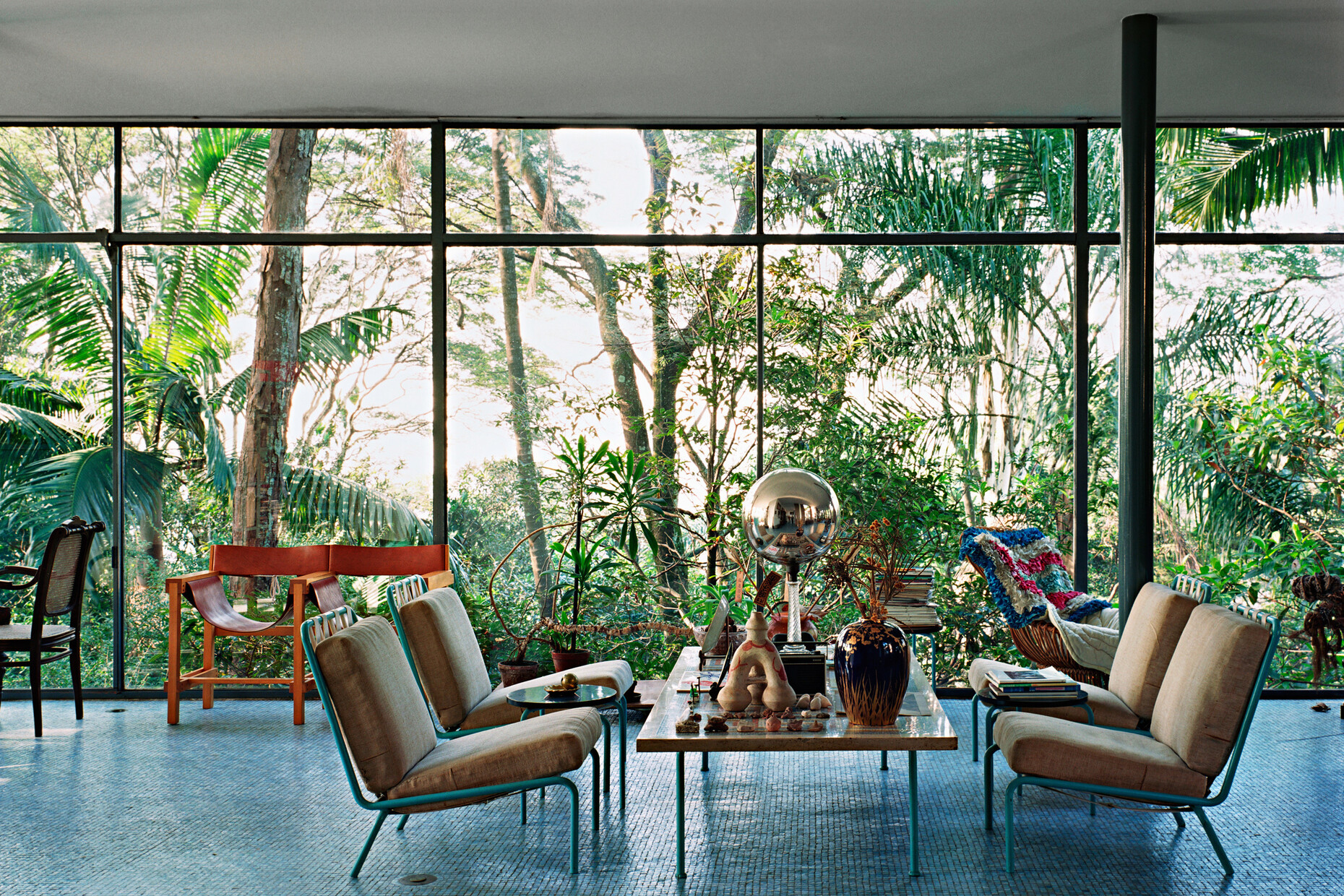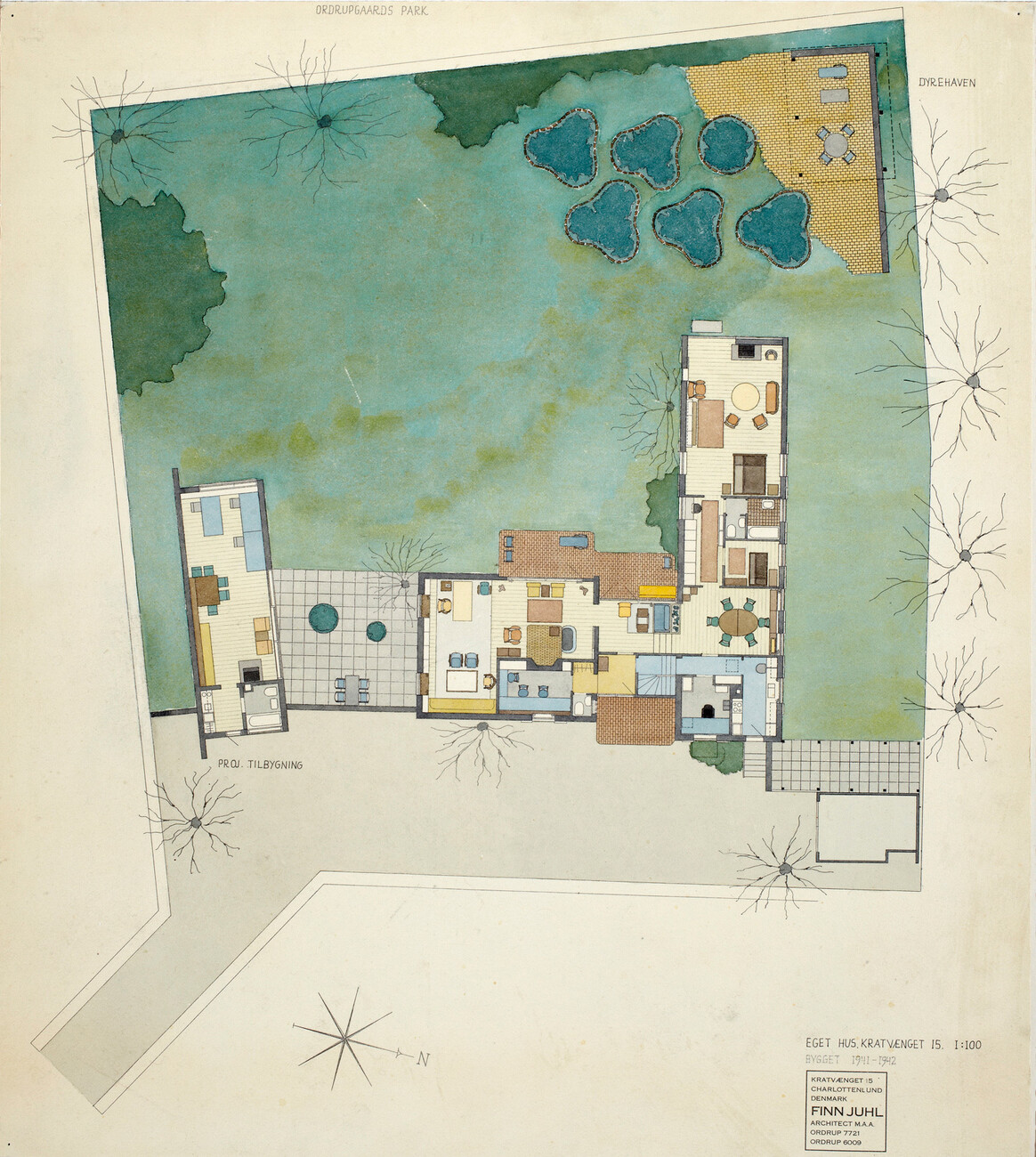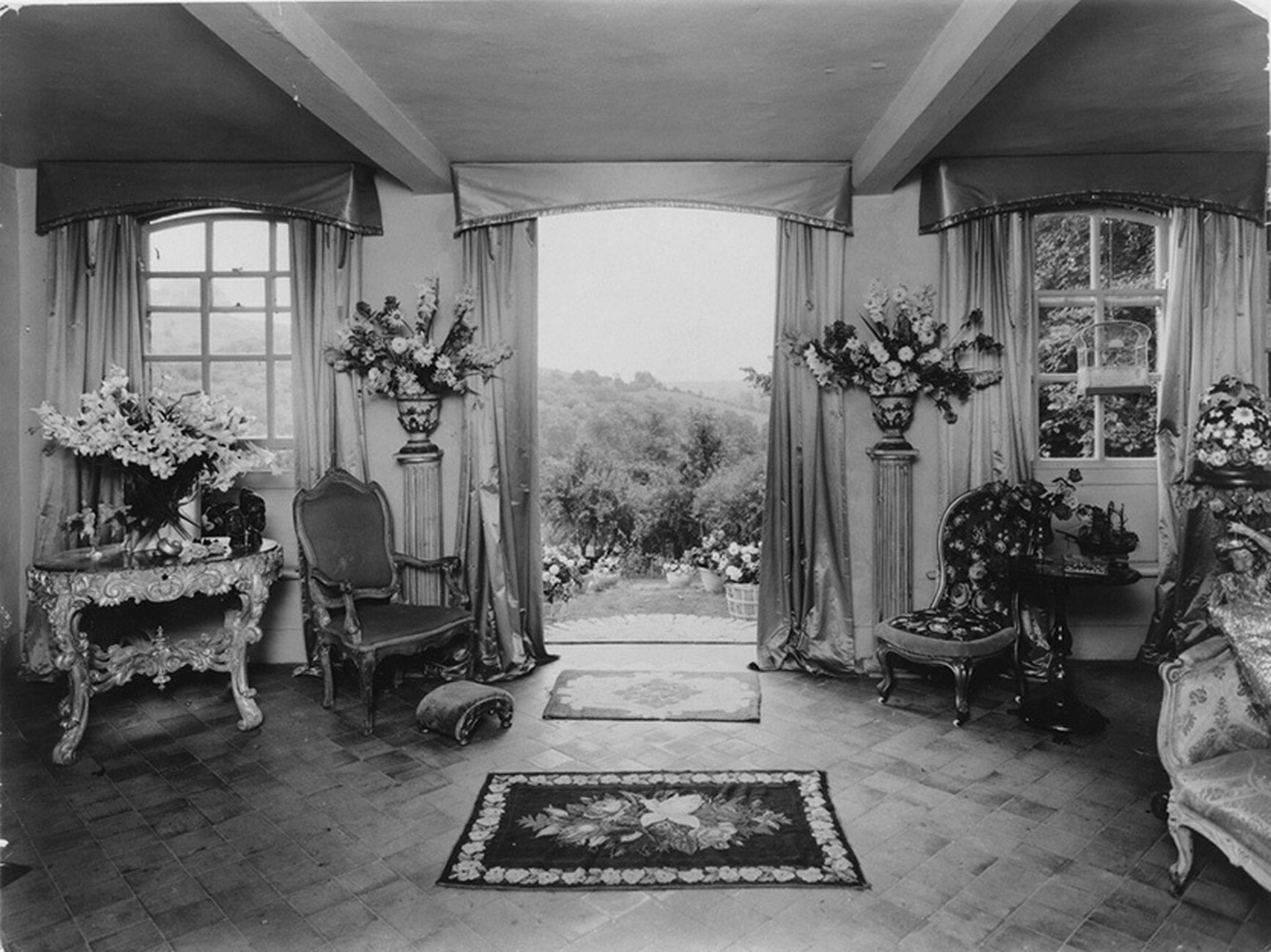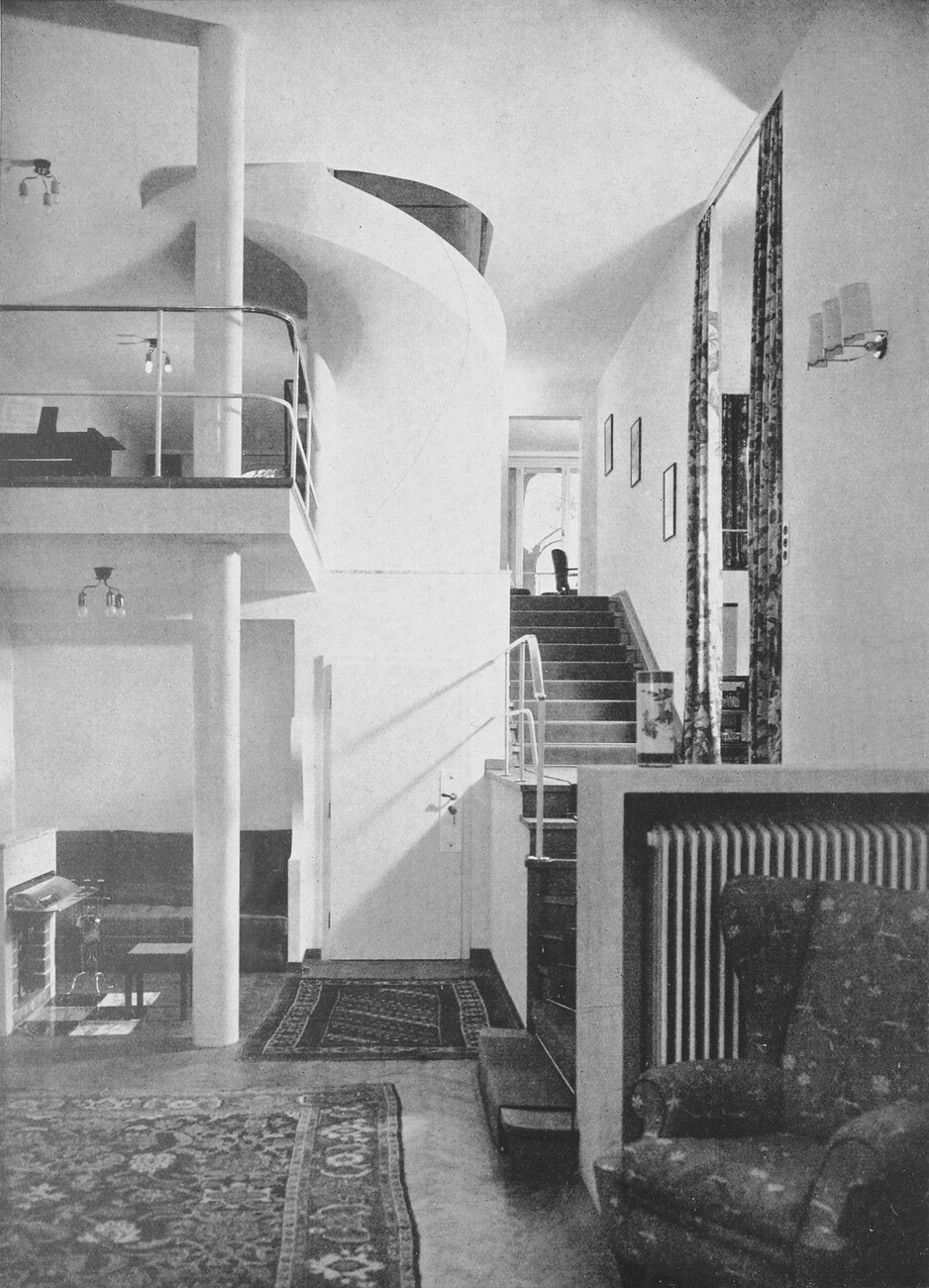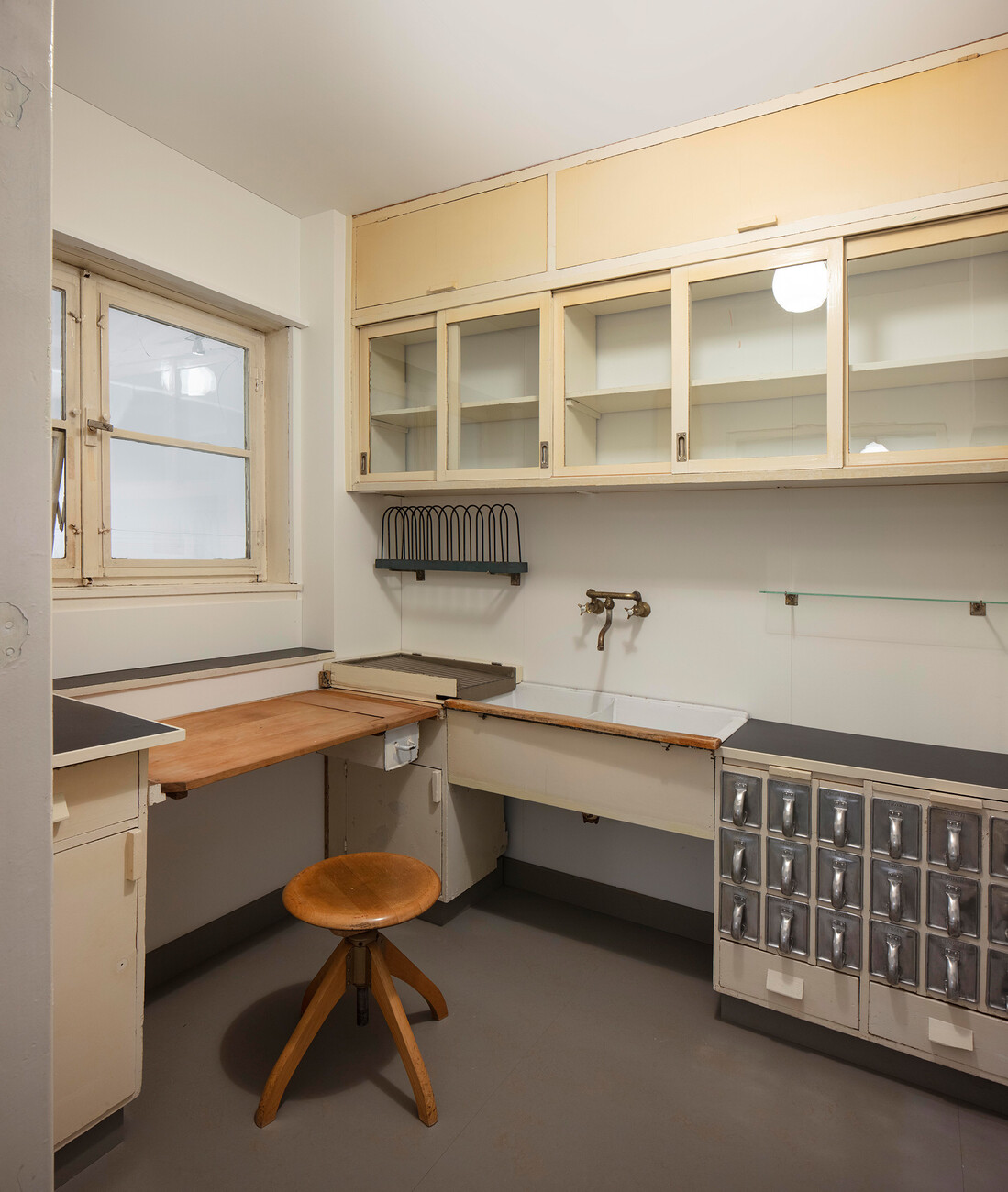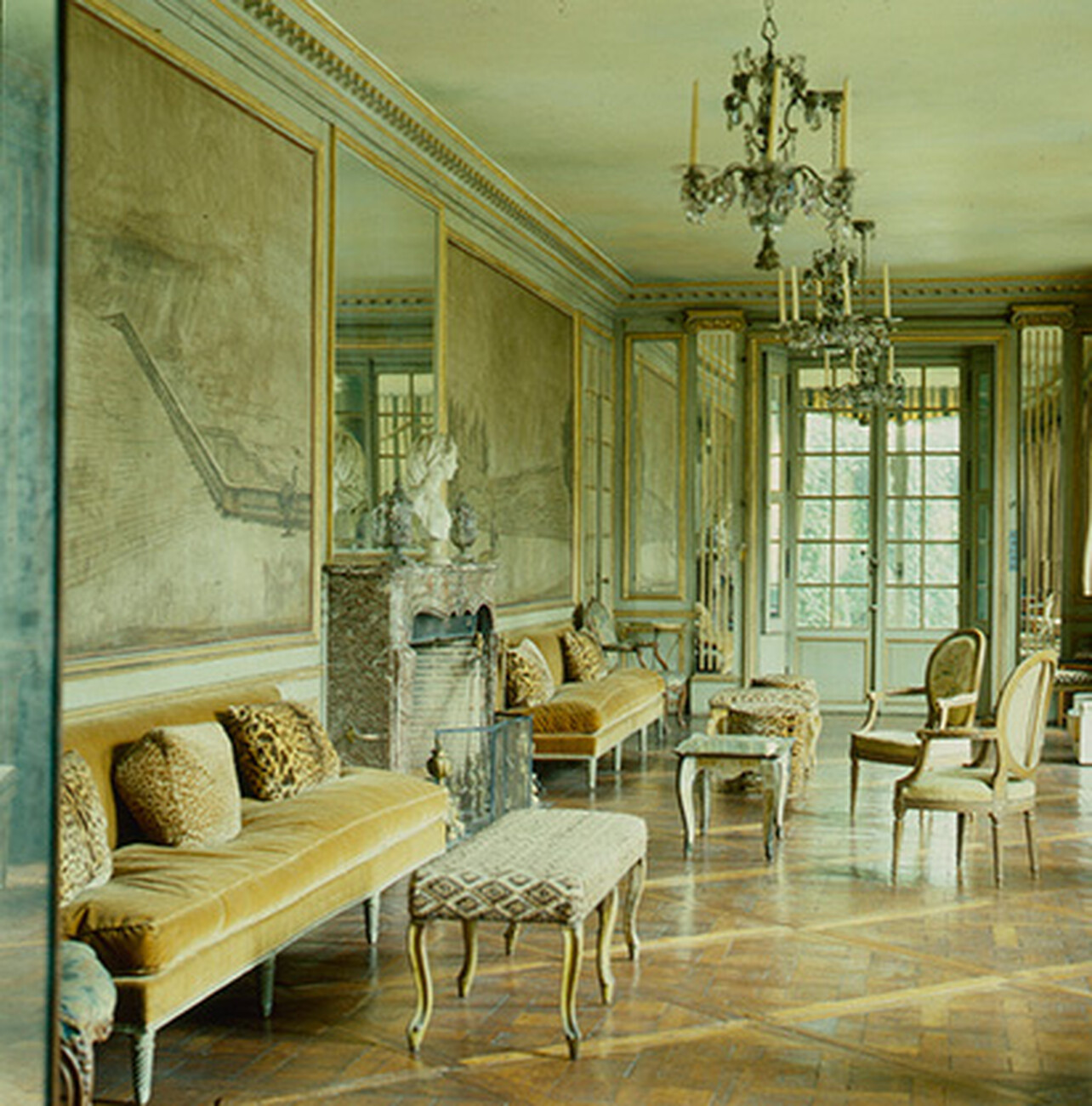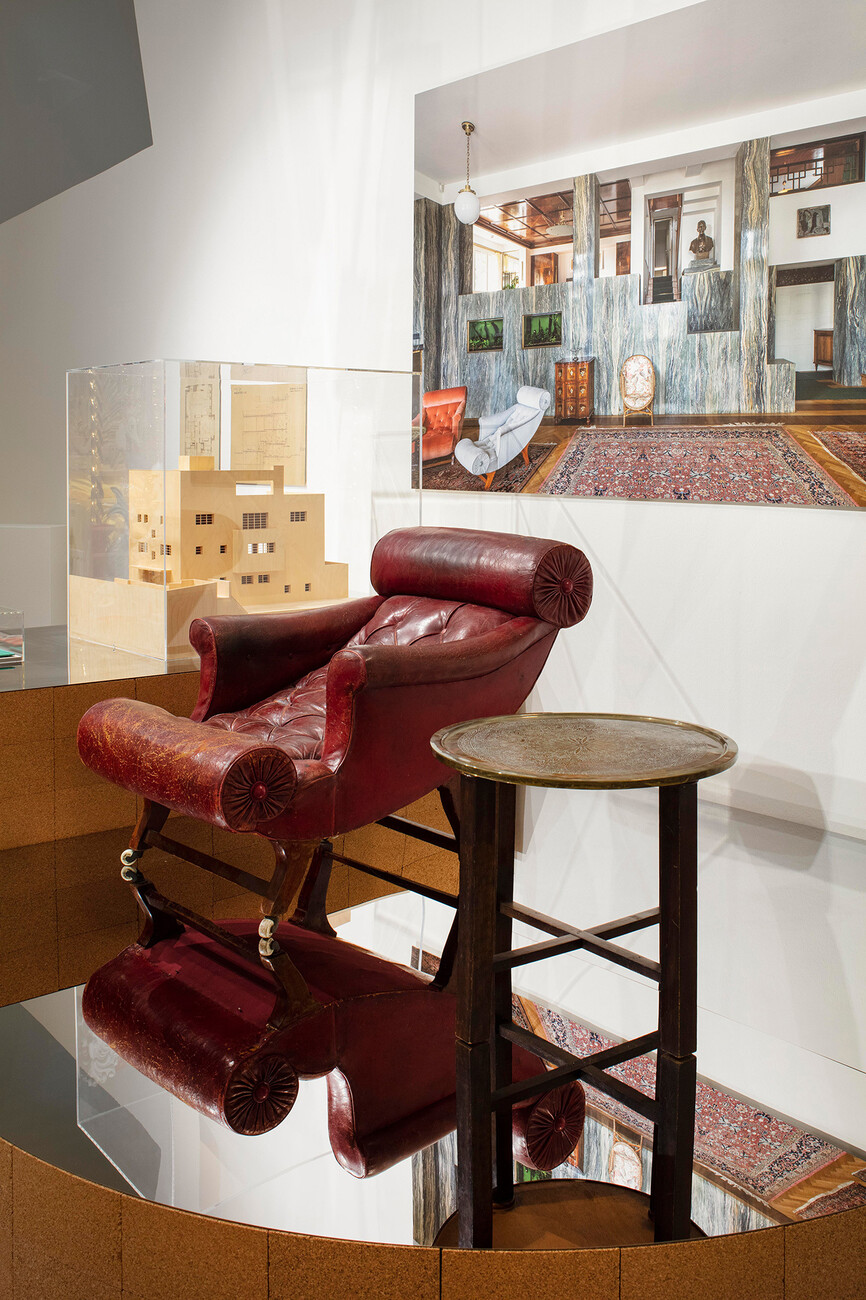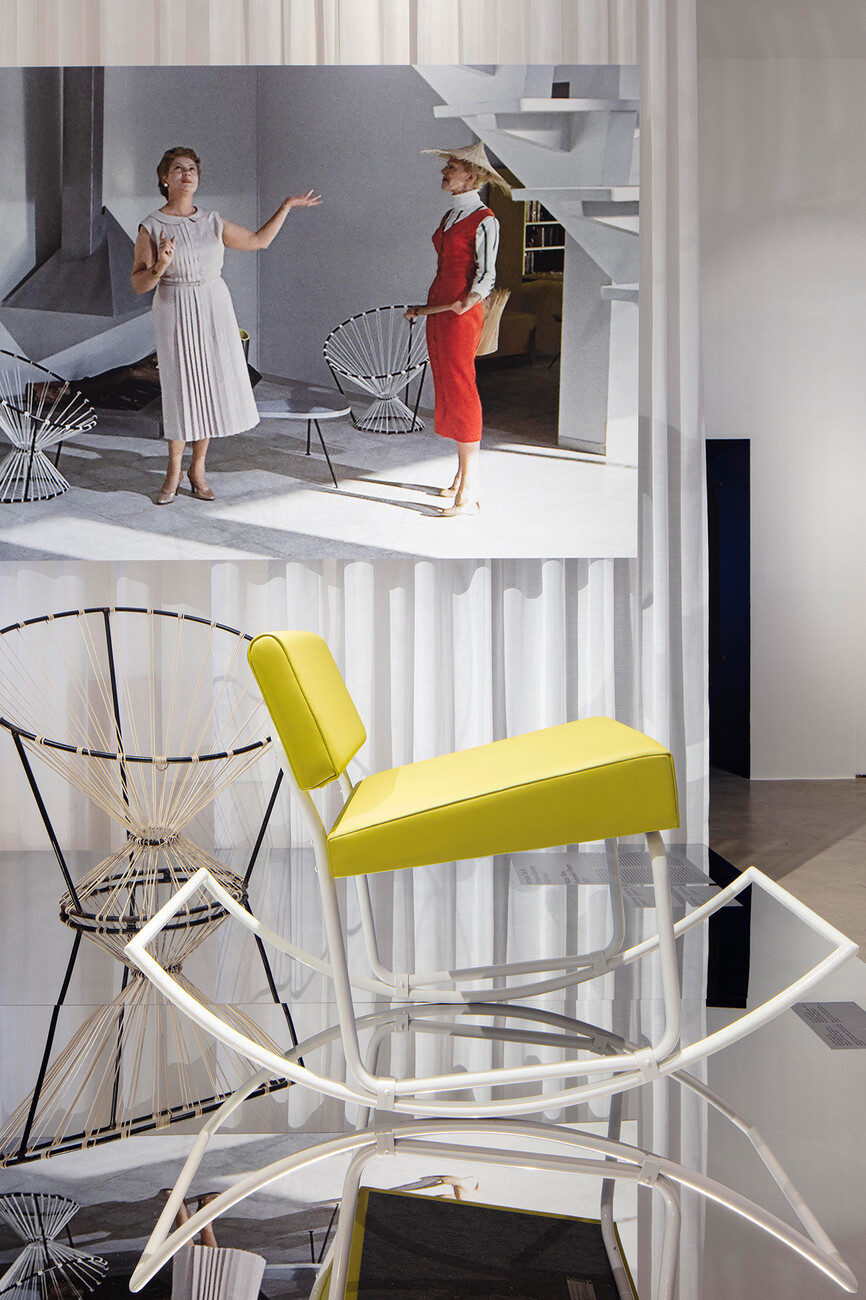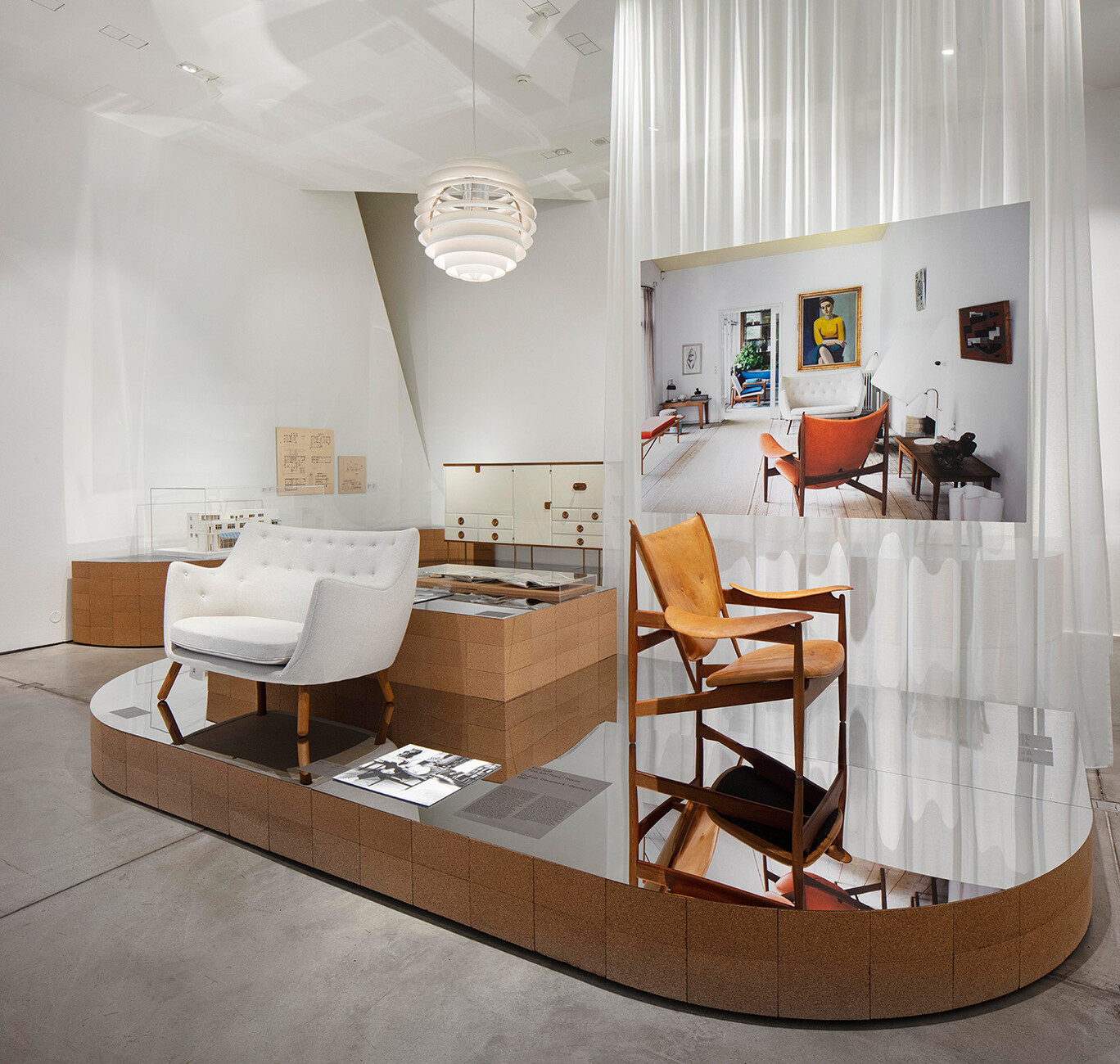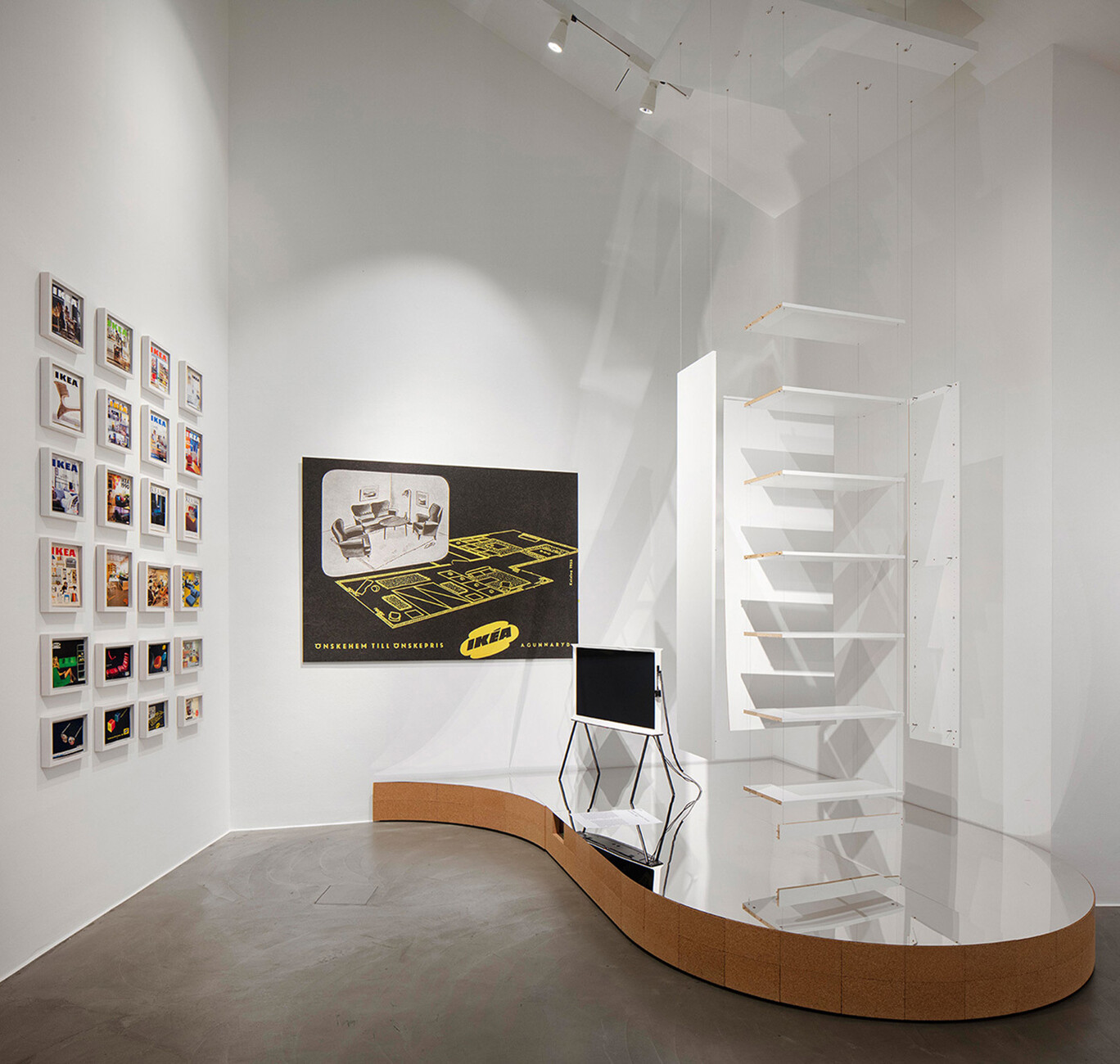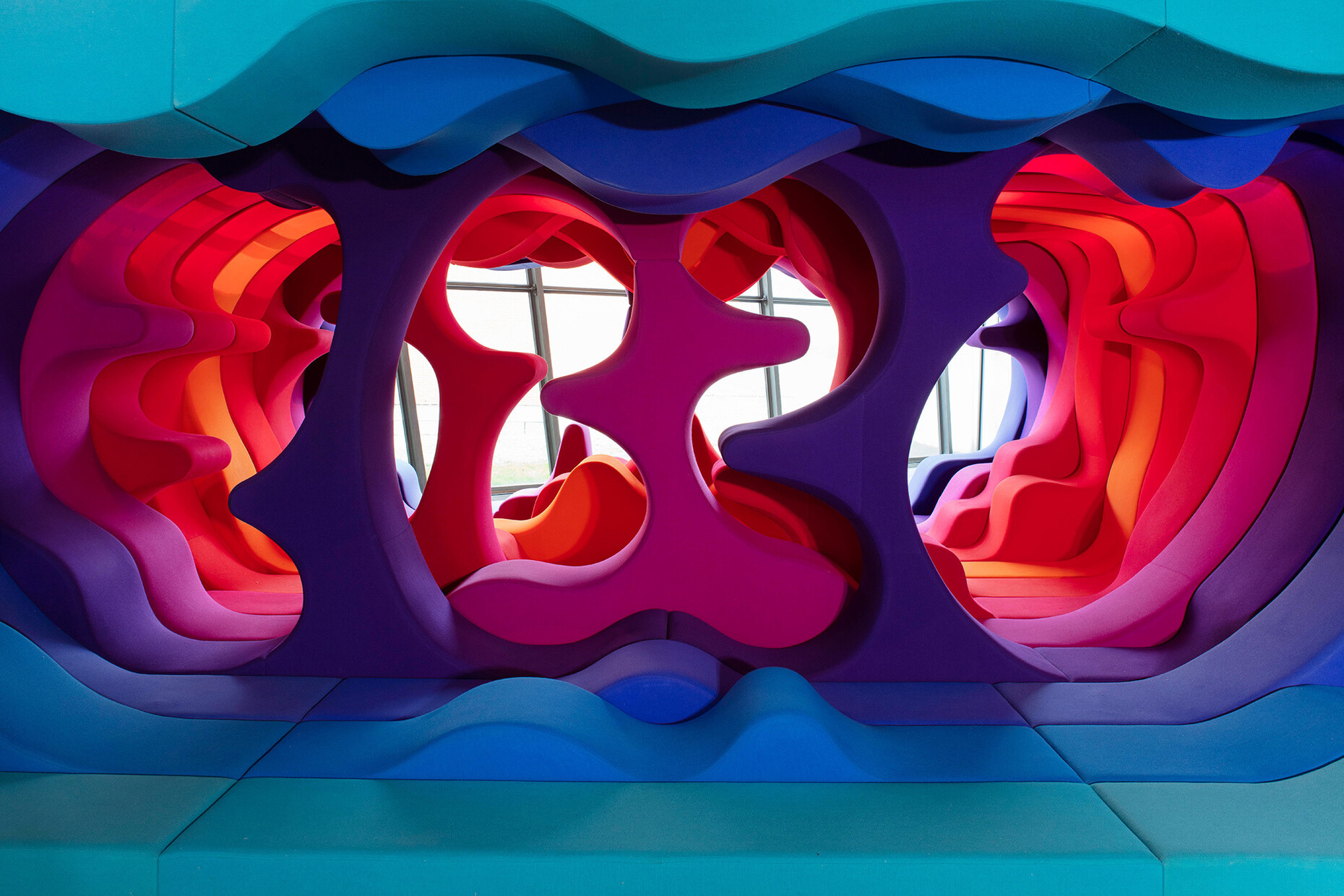Interior design at the turning point
“Today, the topic of interior design tends to be confined to coffee-table books,” states Mateo Kries, Director of Vitra Design Museum. “By contrast a scholarly examination of contemporary interiors is the absolute exception.” Curator Jochen Eisenbrand devised the “Home Stories” exhibition which explores the history of interiors over the last century precisely in order to remedy this blind spot in research. He has selected 20 typical interiors that highlight the immense cultural changes and shifts in taste that took place in the course of that time.
Eisenbrand’s intention in the exhibition (it runs thru August 23, 2020 in Vitra Design Museum in Weil am Rhein) is not to reflect the everyday lived realities of broad swaths of the population. Rather he seeks to identify the turning points in the history of interior design, moments when – as Eisenbrand sees it – the avant-garde ascertained that the way people lived was out of synch with how they typically fitted out their homes. Almost all of the 20 selected interiors that the exhibition presents in the form of individual furniture items, photos, and drawings are iconic projects and afford visitors an in-depth overview of furniture and room design in the 20th and early 21st centuries. Curator Eisenbrand decided to present the exhibits in reverse chronological order, starting with the most recent example and traveling back to the early 20th century. “I didn’t want to create the impression that history moves towards a climax and instead wished to find out retrospectively how certain developments that are still influential today started out in the first place,” he says by way of justifying his decision to begin the exhibition in the present day.
The selected contemporary projects are doubling exciting precisely because the exhibition organizers were not able to draw on the art historical canon as orientation. Where then were they to set the emphases in such a highly diverse range of architecture and design? Three interiors were ultimately selected, which like the rest of the exhibits place the focus on the artistic avant-garde. In opting for Arno Brandlhuber’s “Antivilla" (realized between 2010 and 2015), the “Granby Four Streets” project by Assemble awarded the Turner Prize in 2015, and the micro-apartment “Yoyigen Poketto” by Elii Architects from 2017 an entire raft of current issues is addressed: from repurposing, via sustainability aspects, from social involvement and civic participation through to housing shortage in conurbations. What does become clear from these contemporary projects, however, is that it is the exception rather than the rule for architecture and interior to form a coherent whole. In all three examples the furnishings and fit-out remain only a marginal aspect. The architects evidently believe that it is mainly the province of the occupants.
Departure from the gesamtkunstwerk?
Could a gesamtkunstwerk, such as Adolf Loos' “Haus Müller” in Prague or Mies' “Villa Tugendhat” in Brünn – and they mark the start of the presentation – still be conceivable today? And more importantly are they an ideal that architects or clients still consider desirable? Or have the brand cult and the fashion trends that change at breakneck speed made such works obsolete? Like the bespoke tailors of Savile Row, a handful of artist-cum-architects like John Pawson, Claudio Silvestrin or Glenn Sestig can make a living working for a wealthy and quality-conscious clientele, for whom they create villas more like monasteries in which almost every item of furniture is specially designed and custom-made. And even if many architects flirt with such minimalist interiors and equip their buildings very sparingly with the most delicate and sculptural furniture possible (at least for as long as the photographer is there) – the occupants are more likely to seek inspiration in the social media or in the coffee table books mentioned earlier. And they will presumably place many items in their new home that they bought from a company featured in the very first home story, namely – Ikea. This section of the show almost appears to be the antithesis to the remainder of the exhibition, which after all proclaims that it is and was always the architects, artists and designers, who shaped and defined the zeitgeist with their works. So, are there several strands of development in the history of home design? Perhaps as a future project the museum ought to document that parallel universe to the history of design which is to be found in the items offered by department stores and mass producers, practical interior design guides, and women’s magazines. That would also be the litmus test for the theory that the avant-garde provided the decisive stimulus in the history of interior design in the 20th century. After all, sometimes the best inspiration does not come either from a coffee table book or a scholarly discourse but from a sales brochure.
Home Stories. 100 Years, 20 Visionary Interiors
Vitra Design Museum
Charles-Eames-Str. 2
79576 Weil/Rhein
Runs until August 23, 2020
Opening hours:
Monday to Sunday 10 a.m. to 6 p.m.

